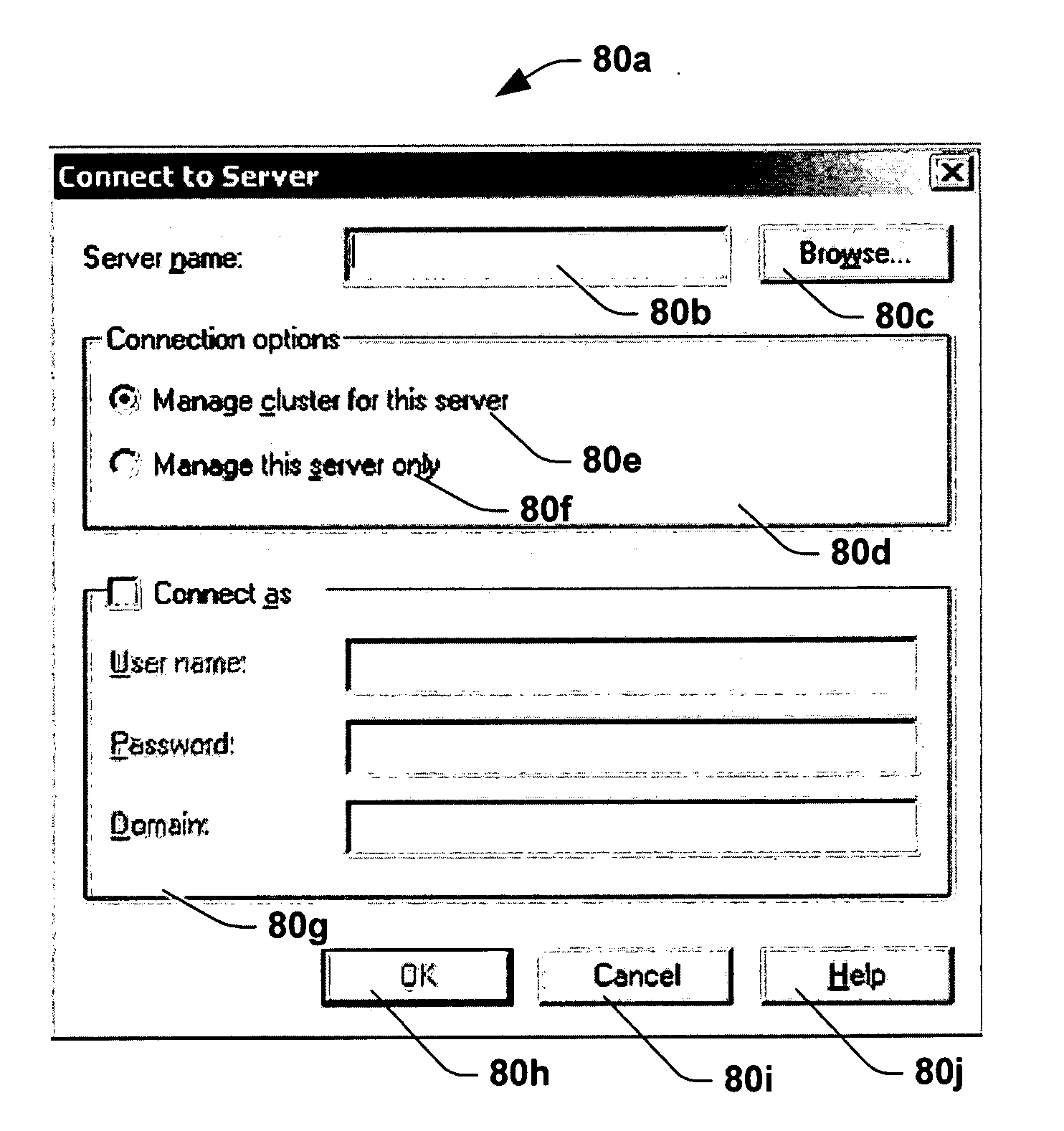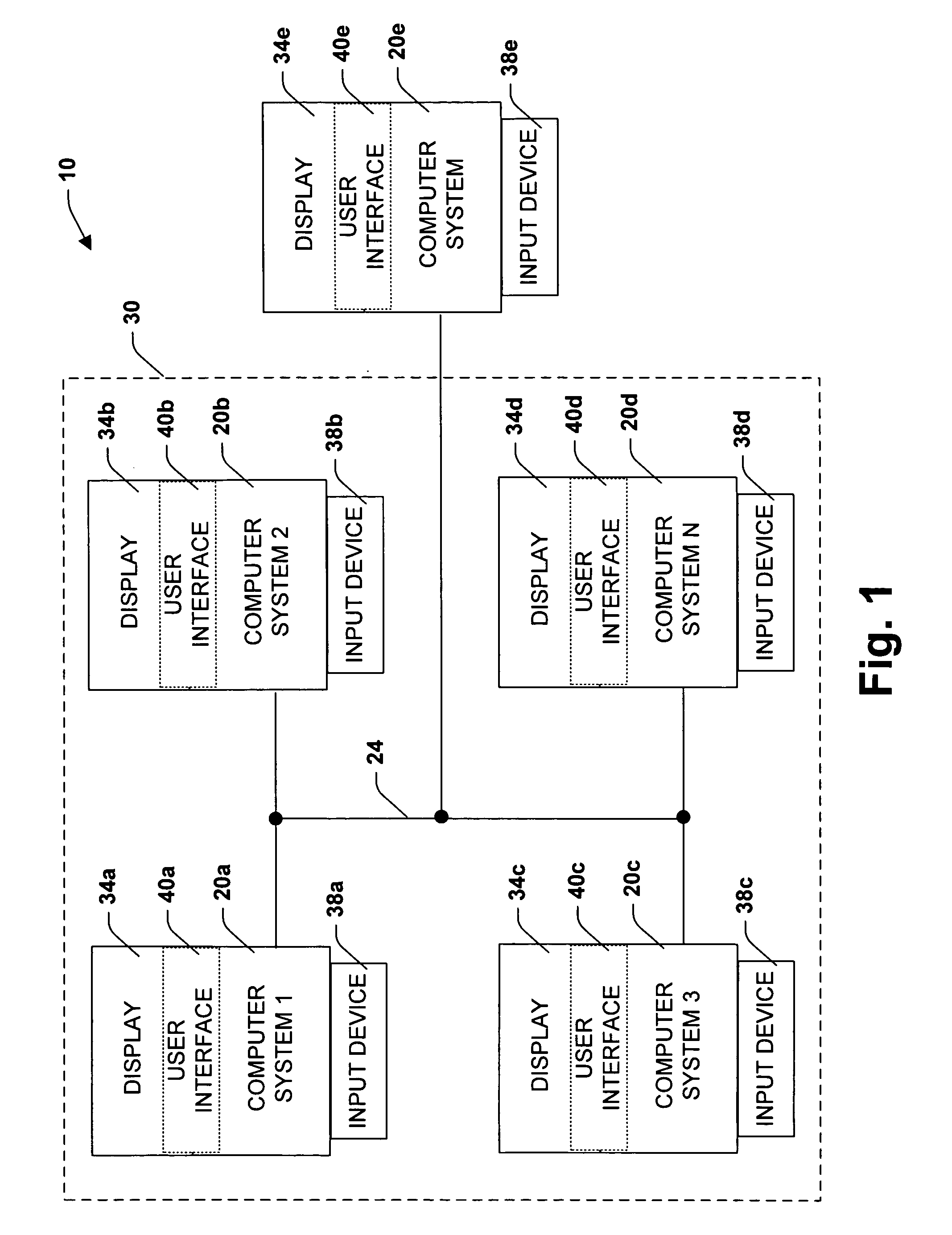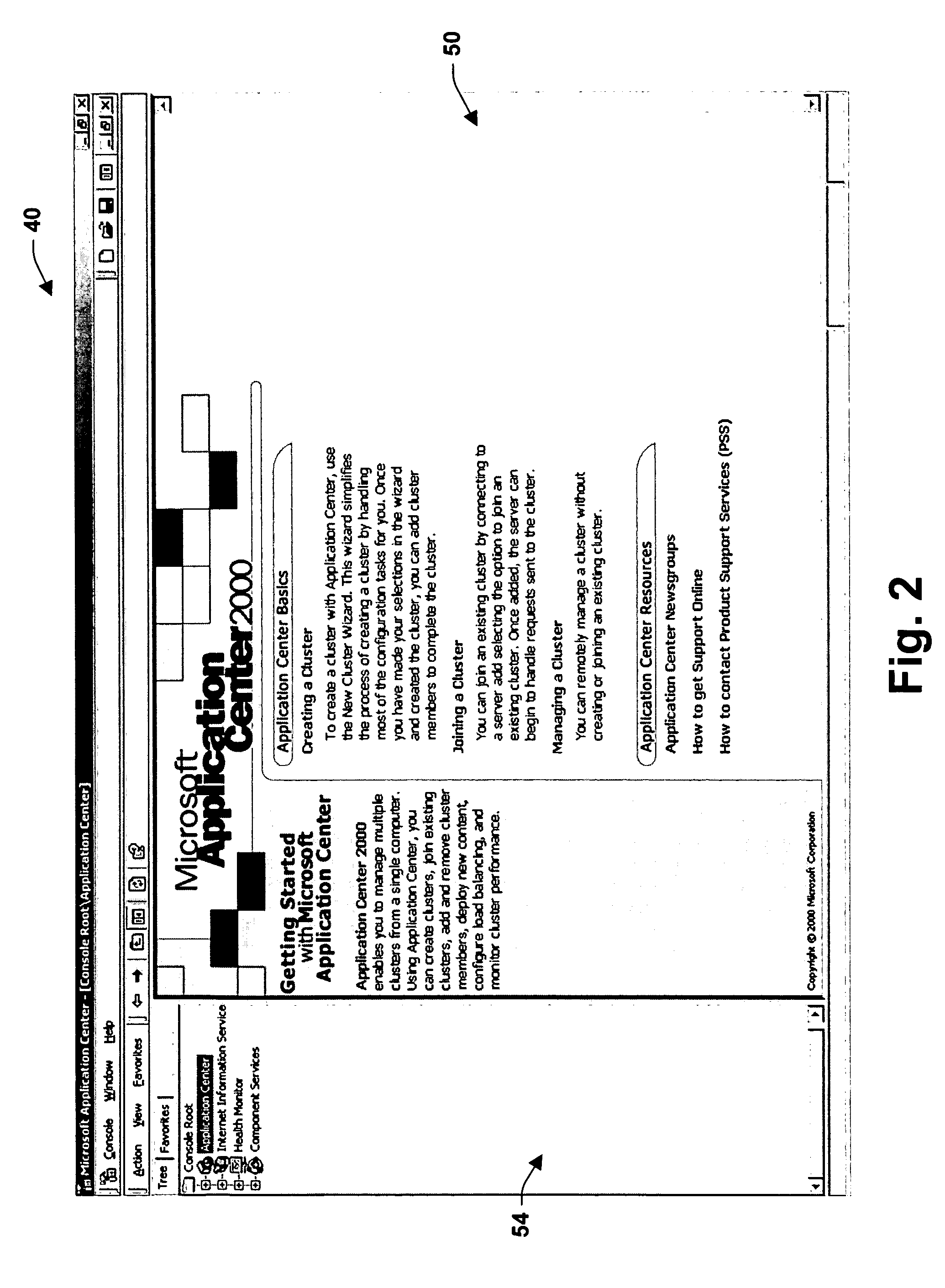User interface to display and manage an entity and associated resources
a user interface and entity technology, applied in the field of computer systems, can solve the problems of large system complexity, time-consuming, and complex system management and administration of individual servers, and achieve the effects of facilitating management and navigation of each member, facilitating viewing, and greatly facilitating system administration, configuration and monitoring
- Summary
- Abstract
- Description
- Claims
- Application Information
AI Technical Summary
Benefits of technology
Problems solved by technology
Method used
Image
Examples
Embodiment Construction
[0033] The present invention is now described with reference to the drawings, wherein like reference numerals are used to refer to like elements throughout.
[0034] In accordance with the present invention, a user interface is provided that greatly facilitates management and administration of an entity. The user interface substantially automates management by enabling a user to administer and manage the entity from any of a plurality of systems operatively coupled to the entity. A consistent user experience is therefore provided wherein the entity may be configured and monitored as if the entity were a singular machine - thereby providing a substantial improvement over conventional systems that may require an administrator to individually configure, monitor, maintain, and upgrade each machine comprising the entity. Thus, the present invention saves time and administration costs associated with conventional systems. Moreover, system configurability and troubleshooting is improved sinc...
PUM
 Login to View More
Login to View More Abstract
Description
Claims
Application Information
 Login to View More
Login to View More - R&D
- Intellectual Property
- Life Sciences
- Materials
- Tech Scout
- Unparalleled Data Quality
- Higher Quality Content
- 60% Fewer Hallucinations
Browse by: Latest US Patents, China's latest patents, Technical Efficacy Thesaurus, Application Domain, Technology Topic, Popular Technical Reports.
© 2025 PatSnap. All rights reserved.Legal|Privacy policy|Modern Slavery Act Transparency Statement|Sitemap|About US| Contact US: help@patsnap.com



